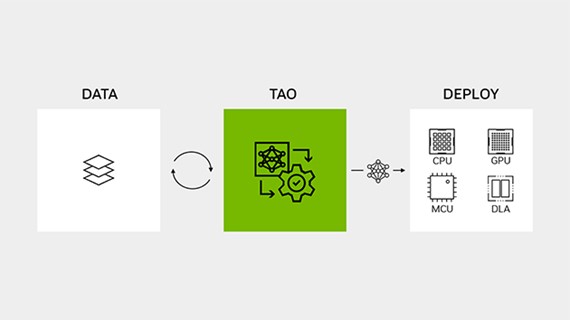Nvidia has updated its TAO Toolkit to version 5.0, making it even easier and faster for users to create custom computer vision models with its comprehensive workflow.
For those who think AI is achievable with a simple press of a button or keystroke, think again. There is a tremendous amount of work required to make AI happen, especially on the back end. Nonetheless, Nvidia makes the process of building production-quality AI applications faster and easier with TAO Toolkit, an open-source, low-code AI development kit.
Introduced in 2021, TAO performs the heavy lifting with Nvidia’s pretrained models, enabling enterprises to select machine learning models and adapt them to their needs, and then deploy the models on any device at the edge or in the cloud. Typically, creating AI/ML models requires a tremendous amount of data, but with the use of TAO Toolkit, that workflow is simplified and streamlined via transfer learning, whereby learned features from an existing neural network are applied to one that is new and customized. At the same time, the model training process is simplified, and the model is optimized for inference.
Now, with a number of new features introduced in version 5 of TAO Toolkit, users have even more capabilities at their disposal that make the process smoother and more robust, including the ability to export their models in ONNX, an open format for wider interoperability. As a result, models trained with the TAO tool kit can be deployed on any computing platform, including GPUs, CPUs, MCUs, DLAs, and others.

In addition, users of TAO Toolkit 5 are able to employ state-of-the-art vision transformers, for better accuracy, as transformer-based models are better able to understand scene context than their convolutional neural network (CNN)-based counterparts used for analyzing visual imagery. Because they are more accurate, the models are less prone to image corruption and noise.
Version 5 further contains new AI-assisted annotation capabilities for labeling segmentation masks and for fixing bounding boxes for object detection, resulting in both cost and time savings. Furthermore, with AutoML, TAO Toolkit 5.0 enables users to more easily train their models without having to fine-tune a plethora of parameters.